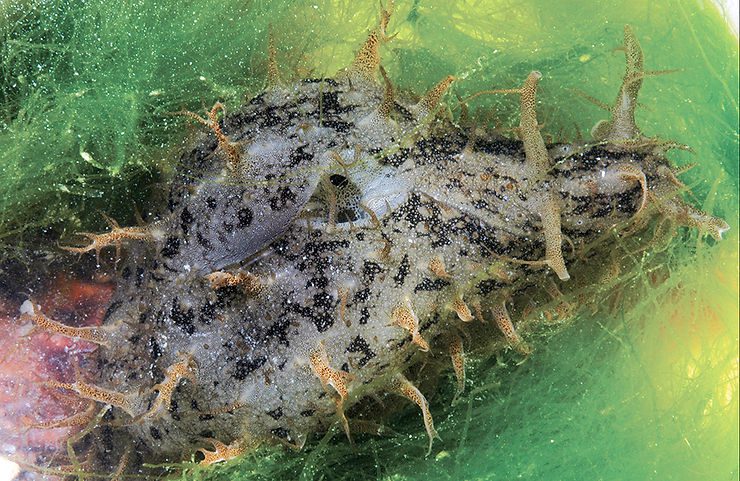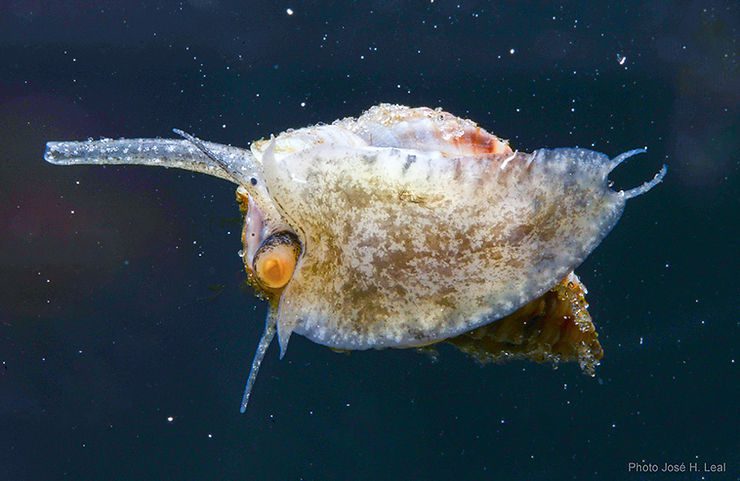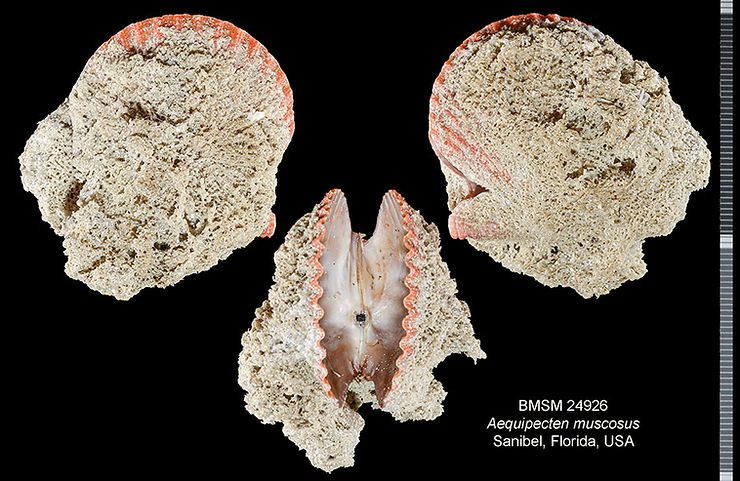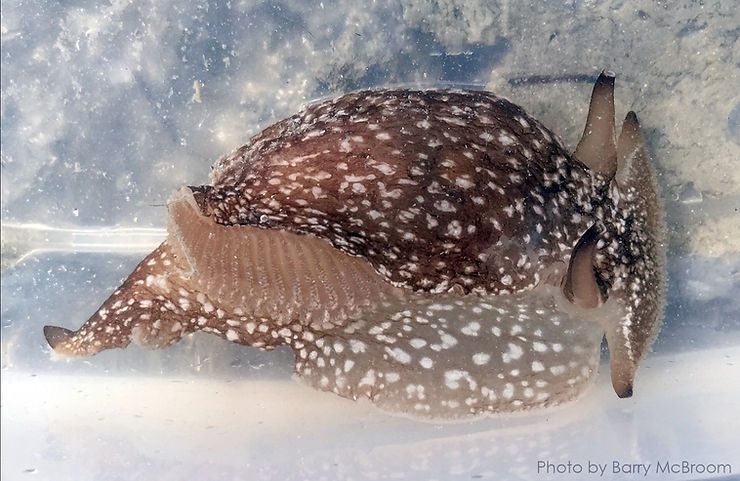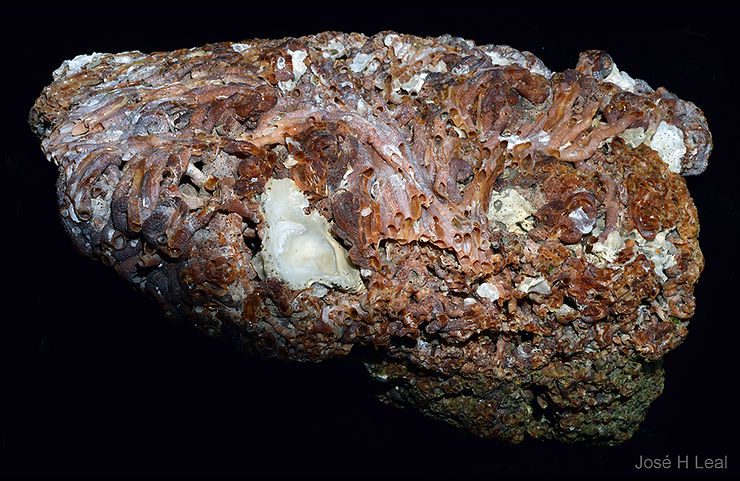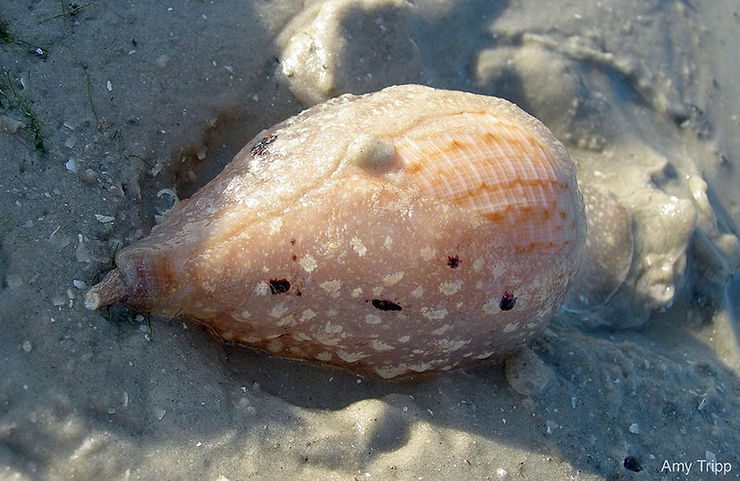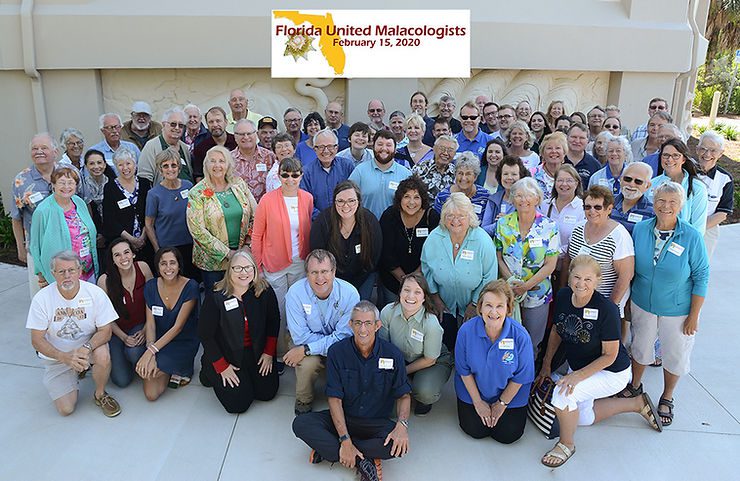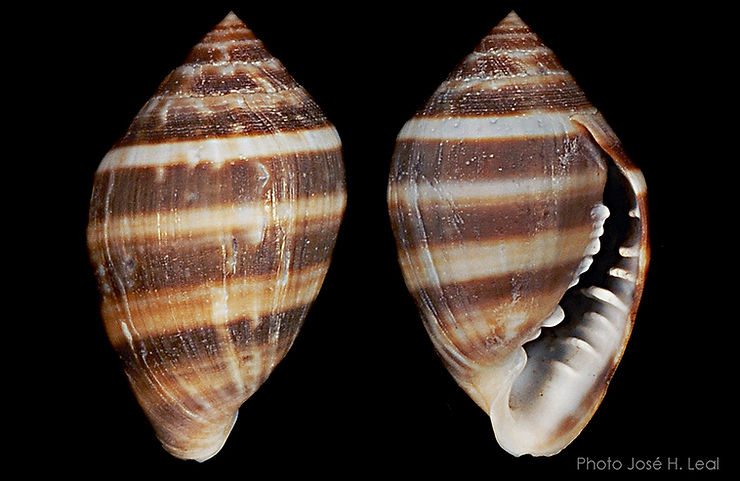
Shell of the Week: The Eastern Melampus
Melampus bidentatus Say, 1822 reaches 13 mm (about 0.5 inch), and has a solid, relatively thick shell with a smooth exterior. The visible internal shell surface (inside of the shell opening) shows a pattern of many tooth-like projections. The shell color consists of alternating bands of off-white and brown. Members of the melampus family Ellobiidae inhabit mangrove areas in quiet bays with sandy-mud bottoms, where they are found in the region immediately above the high tide line. They are adapte
